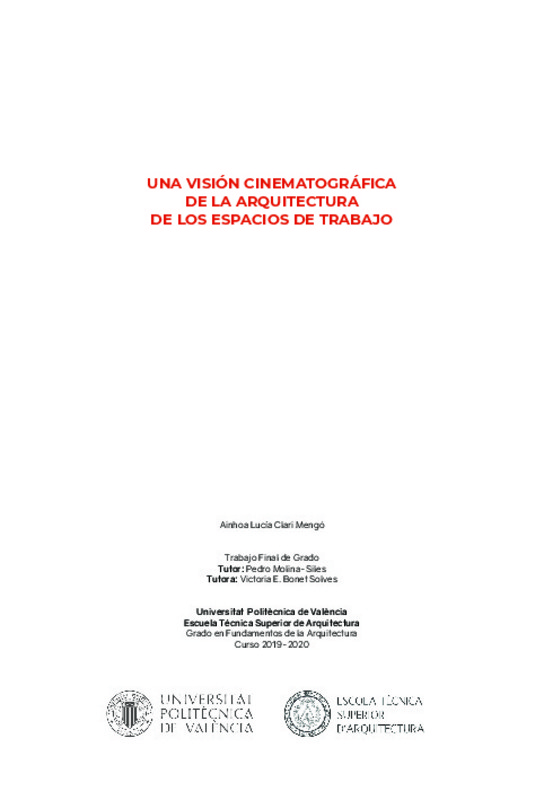JavaScript is disabled for your browser. Some features of this site may not work without it.
Buscar en RiuNet
Listar
Mi cuenta
Estadísticas
Ayuda RiuNet
Admin. UPV
Una visión cinematográfica de la arquitectura de los espacios de trabajo.
Mostrar el registro completo del ítem
Clari Mengó, AL. (2020). Una visión cinematográfica de la arquitectura de los espacios de trabajo. Universitat Politècnica de València. http://hdl.handle.net/10251/174130
Por favor, use este identificador para citar o enlazar este ítem: http://hdl.handle.net/10251/174130
Ficheros en el ítem
Metadatos del ítem
| Título: | Una visión cinematográfica de la arquitectura de los espacios de trabajo. | |||
| Autor: | Clari Mengó, Ainhoa Lucía | |||
| Director(es): | ||||
| Fecha acto/lectura: |
|
|||
| Resumen: |
[ES] La oficina es el escenario en el que se desenvuelve, al menos, un tercio de la vida y no siempre es el lugar más adecuado para el desarrollo de una actividad. La abandonamos al salir del trabajo, pero esta nos persigue ...[+]
[EN] The office is the stage in which at least a third of our life unfolds and it is not always the most suited place for the development of an activity. We abandon it when we get off work, but it haunts us through the ...[+]
|
|||
| Palabras clave: |
|
|||
| Derechos de uso: | Reconocimiento - No comercial (by-nc) | |||
| Editorial: |
|
|||
| Titulación: |
|
|||
| Tipo: |
|
recommendations
Este ítem aparece en la(s) siguiente(s) colección(ones)
-
ETSA - Trabajos académicos [4687]
Escuela Técnica Superior de Arquitectura







